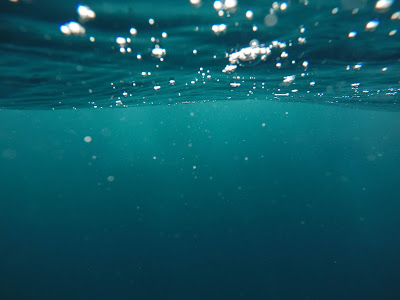Climate change is undoubtedly the biggest technological challenge facing mankind in the
next decade. Mitigating climate change is not an easy task. It involves various technological
advancements, from reducing carbon emissions to sequestering existing atmospheric carbon.
At present, a large amount of researches in the field of climate change focus on generating energy without carbon emission, which is undoubtedly a difficult task-more than 50% of the earth's energy supply still comes from fossil fuels. I think it is more important to store the carbon we have already emitted and the carbon we will certainly emit in the next ten years. Why? On one hand, there is already a clear solution for low-carbon energy production: Wind energy and solar energy are mature technologies, and nuclear energy can be promoted on a large scale. On the other hand, carbon dioxide storage technology is still in its infancy and requires more research. More importantly, even if we stop emitting carbon tomorrow, we still emit so much carbon into the atmosphere that our climate will change significantly in the next few centuries.
For these reasons, I think our research on climate warming should focus on the storage of carbon dioxide. Studying seawater electrolysis as a storage of billions of tons of carbon may become a means to help our climate return to the stability of the pre-industrial era.
What needs to be believed is that the ocean may store all our carbon emissions. For millions of years, marine organisms have been absorbing carbon dioxide dissolved in water to make calcium carbonate shells. [1] Unfortunately, as humans have emitted more and more carbon dioxide, and more of that
carbon dioxide has been absorbed into the ocean, this reaction is in jeopardy.
Chemically speaking, carbon dioxide is a Lewis Acid — greater amounts of dissolved CO2 have lowered the pH of the ocean. As the pH decreases, the solubility of calcium carbonate increases. The carbon dioxide stored in them is released and the ability of the ocean to absorb atmospheric carbon dioxide is reduced. Chemically speaking, carbon dioxide is a Lewis Acid — greater amounts of dissolved CO2 have lowered the pH of the ocean. As the pH decreases, the solubility of calcium carbonate increases. The carbon dioxide stored in them is released and the ability of the ocean to absorb atmospheric carbon dioxide is reduced. In other words, what is needed is a way to increase the pH of the ocean as well as its ability to dissolved CO2.
At first glance, that might seem like an impossible task, because the oceans are enormous. However, there is a way to accomplish this feat. However, there is a way to achieve this idea-electrolysis. Passing an electric current through the brine produces hydrogen gas at the cathode and chlorine gas at the anode. [2] The use of special advanced electrodes can generate oxygen instead of chlorine at the anode. [3] Sodium hydroxide formed by hydrogen and oxygen is the most important product of this reaction. Releasing sodium hydroxide into the ocean would reduce ocean acidification, allowing the ocean to absorb significantly more carbon dioxide. As pH increased further, marine organisms would no longer be needed—calcium ions in the ocean would react with hydroxide produced in this process and carbon dioxide from the atmosphere to form insoluble calcium hydrogen carbonate. This solid would settle to the bottom of the ocean, effectively sequestering the carbon dioxide it contains for centuries or longer.
2CO2 + Ca2+ + 2OH-1 → Ca(HCO3)2 (s)
There is, of course, a catch: the scale of this operation would be absolutely massive.
Humans have emitted more than 440 petagrams of carbon into the atmosphere since 1850.
[4] At around 12 grams per mole, we would need to absorb about 37 petamoles of two moles
of carbon dioxideatmospheric carbon. Since it takes two moles of hydroxide to absorb two moles of carbon
dioxide and it takes two moles of electrons to create two moles of hydroxide ions:
2H2O + 2e- → H2 + 2OH-
it will take one nearly 37 petamoles of electrons to sequester all of the atmospheric carbon in
our atmosphere. A mole of electrons is about 96,485 C, giving us a total of 3.57 x 1021 Coulombs of charge. If we give ourselves exactly one decade to absorb all of this carbon,
we would need:
Electrical power can be calculated as the product of current and voltage. An optimal solar
system produces around 33 volts6. Using this fact, we can estimate the total amount of power needed:
P = 1.14 x 1013A • 33V = 3.76 x 1014 W
The output of typical power plants might be in the range of 2 x 108 to 1 x 109 W — roughly one hundred thousand such power plants would be needed to sequester all
of the atmospheric carbon dioxide we have emitted since the industrial revolution. And, of
course, none of these power plants could use fossil fuels.
I think this approach can be part of a global climate change mitigation strategy. Today, wind turbines and solar panels usually generate more electricity than needed. This extra, surplus electricity can be sent to ocean electrolysis stations, where it can be used to store carbon. Adding additional solar and wind energy can expand carbon dioxide storage projects. This is a daunting task, but this method can provide a real way to isolate billions of tons of atmospheric carbon.
Works Cited
1 - https://www.whoi.edu/multimedia/carbon-dioxide-shell-building-and-ocean-acidification/
2 - https://aquarius.nasa.gov/pdfs/electrolysis.pdf
3 - https://www.pnas.org/content/116/14/6624

